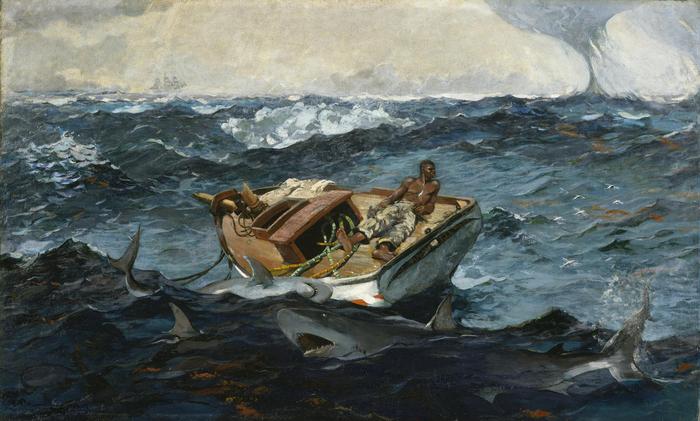Like fellow 19th-century artist Fitz Henry Lane, Winslow Homer started his career as an apprentice at a lithography workshop in Boston, Massachusetts, in 1855. He leveraged this experience to gain admittance to the National Academy of Design in 1859 and, following his graduation from the academy, he became an artist-correspondent on the front lines of the Civil War. After the war, Homer debuted as a professional painter and enjoyed critical acclaim throughout his career.
Homer is regarded as one of the great American painters of the 19th century, with subject matter ranging from the Civil War and the ensuing Reconstruction, to seascapes and portrayals of 19th-century women. While the ocean was just one of many themes that Homer explored, it was the one he would return to several times throughout his life. Of particular interest to Homer was the raw power that the sea exhibited in a storm. A friend of Homer recounted, "[W]hen I knew him he was comparatively indifferent to the ordinary and peaceful aspects of the ocean....But when the lowering clouds gathered above the horizon, and tumultuous waves ran along the rockbound coast and up the shelving, precipitous rocks, his interest became intense." This intense interest is evident in several of his pieces including "Incoming Tide" and "Eight Bells," both of which depict stormy seascapes.
Later in his life, Homer would spend his winters in Florida, Cuba, and Bermuda, where he was able to capture the lives of fishermen who braved the ocean in order to make a living. This setting served as the inspiration for two of Homer's most famous paintings, "The Gulf Stream" and "After the Hurricane." Both depict the harsh realities of life at sea.
Contributed by Kane Thomas
Sources:
National Gallery of Art. "Highlights: 'Incoming Tide'". <http://www.nga.gov/feature/homer/homer19.htm>


